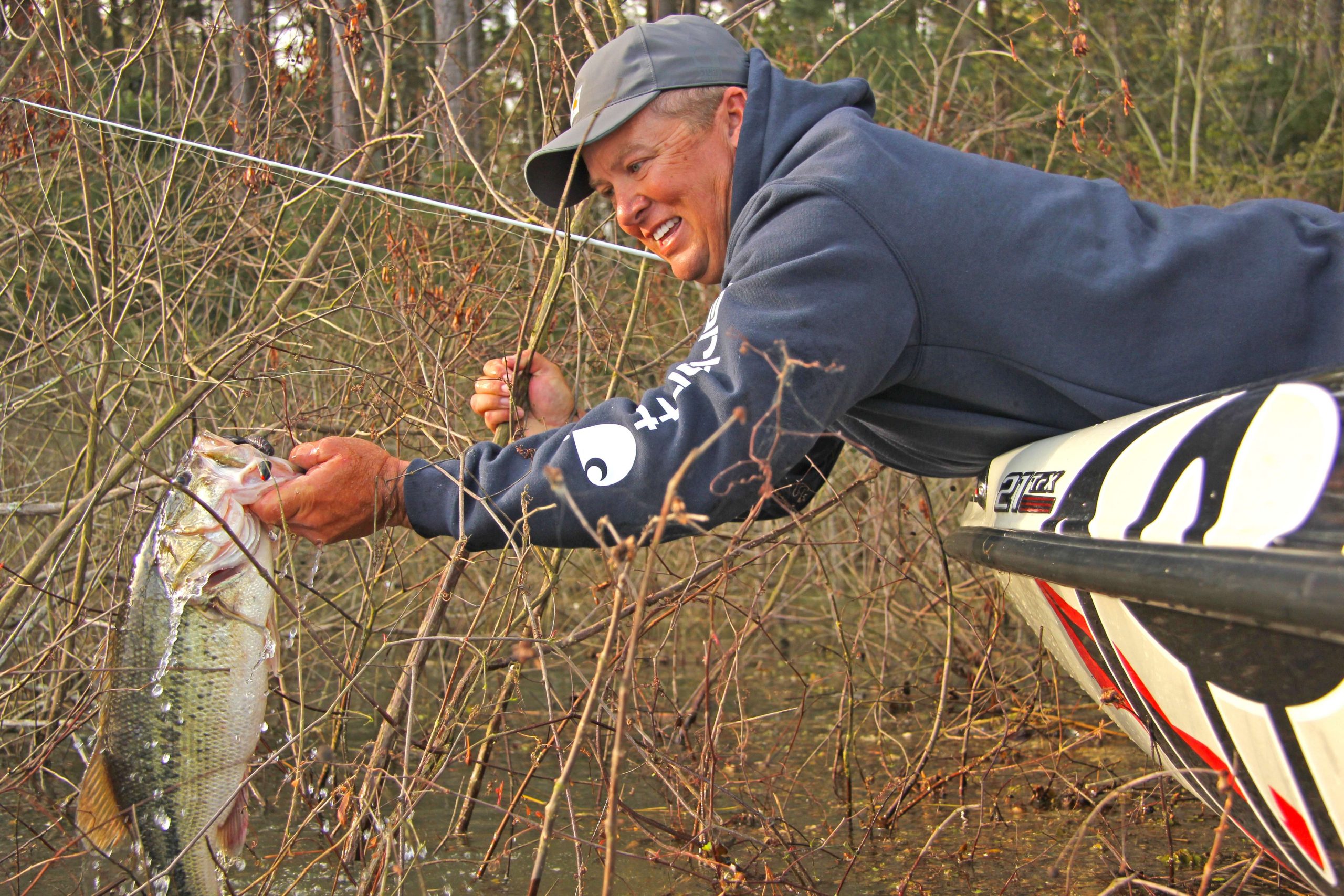
April showers bring May flowers is an age-old expression, but for Bassmaster Elite Series pro Terry “Big Show” Scroggins, it’s more like “spring rains put bass in the bushes.”
“Anytime you get high water in the spring, the flooded shoreline habitat is where you need to be headed,” says the Team Toyota pro and winner of nearly $2 million in tournament cash.
“If you could look down into all the shoreline bushes that have water around them in the springtime, there’s a real good chance you’d see bass spawning on the roots of several of them,” says Scroggins. “But even if they’re not in there to spawn, flooded bushes still provide an awesome piece of shallow habitat for bass to ambush prey from.”
Best to be there when it’s rising
“I prefer to flip and pitch bushes mostly when the water is rising,” says Scroggins. “It just seems like when the water has been up for a while, or when it’s falling, they don’t bite quite as well as when it’s rising. Not saying it can’t still be good when it’s falling, but it just seems best when it’s on the rise.”
Corner pocket
“I always start looking for bass in flooded bushes toward the back of the small coves, creeks or pockets,” says Scroggins. “They always seem to move to the shallowest bushes first when the water is rising, and obviously those are usually located in the back corners of small coves, creeks and pockets. If the water is falling, then you might try the bushes out on the points,” he adds.
Off-colored water is optimal
It’s natural for anglers to be intimidated when the water of their favorite fishery turns off-colored, or even slightly muddy, as a result of spring rains, but Scroggins embraces it.
“I actually prefer that the water have some color to it when I’m fishing shallow. You just have to realize the dirtier it is, the shallower you need to be fishing,” says Scroggins. “The rule of thumb is if your boat is still floating, then you’re not too shallow to catch a bass in dirty water.”
Tie a Red Phillips knot
“I like to use Hi-Seas 50-pound Grand Slam Braid as my main line, but – you don’t want to tie braid to your lure because braid tends to ‘notch’ itself into the bark of the flooded bushes,” cautions Scroggins. “So, to your braided main line, tie a Red Phillips knot to a 25 pound fluorocarbon or monofilament leader that will slip through the wood easier without biting into the bark and you’ll still have the optimal strength that braided line offers to get ‘em out of heavy cover.”
Long rod, but not an 8-footer
“A lot of guys are using the longest rod they can fit into their rod locker to flip and pitch with these days, like 7’ 10”, 7’ 11” and even 8-footers, but I like a 7’ 6” extra heavy rod because it offers better casting control than those longer rods, but still plenty of backbone,” says Scroggins.
Three simple lure choices
“The biggest thing about choosing a soft plastic lure to pitch into heavy flooded cover is don’t use anything with a ton of appendages – they hang up,” warns Scroggins. “I like to Texas rig a 5” Yum Dinger on a 1/4 ounce weight, or a YUM Bad Mamma Texas-rigged on 5/16 ounce weight, in either black/blue, black neon, or junebug, and my third lure to fish flooded shoreline bushes would be the old reliable 1/2 ounce black/blue jig.”





